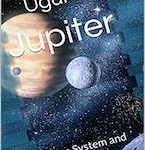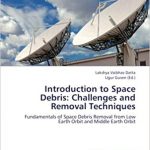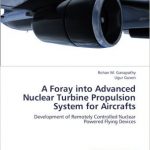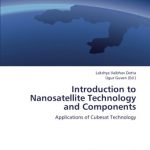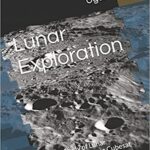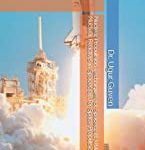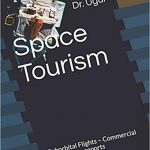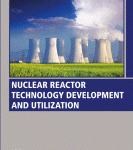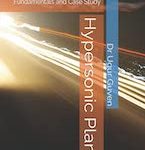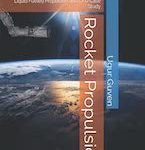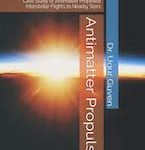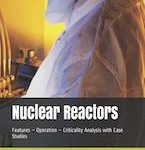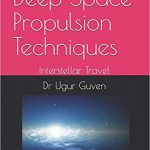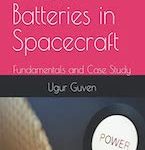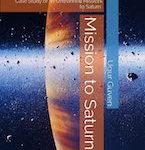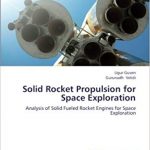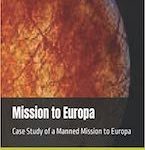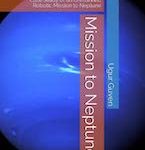Dr Guven Areas of Research Include:
Nuclear Rocket Propulsion
Interstellar Travel Technologies
Spaceport Feasibility for Space Tourism Launches
Gas Core Nuclear Reactors
Nuclear Energy Powered Lunar Base Design
Helium Cooled Nuclear Reactors
Thesis Conducted under Dr Guven
Many PhD Thesis, Master’s Thesis, and Undergraduate Thesis and Internships have been conducted under the supervision of Prof. Dr Ugur Guven. You can see the list here or contact for more information.
Projects under Dr Guven
There are several projects that are continuing under Dr Ugur Guven with the help of his undergraduate, postgraduate and PhD students. These projects are being conducted for the betterment of the space community. Please feel free to collaborate.
Utilization of Private Spaceports for Space Tourism and Space Travel: Case Studies of Various Global Locations
Space Technology and Space Travel has been driving mankind for many years since the beginning of 20th century. In fact, since Tsiolkovsky or even since Jules Verne, mankind has been looking for various means to go into space. Currently this has been achieved through the works of several space agencies and many nations have been able to send an astronaut into space in collaboration with various space programs. However, most of these have been done through the act of governments and thus such endeavours are limited by fiscal spending. We know from the history of aviation that the major reason for the boom of the aviation industry was actually the advancements of airports and through the spending of private investors. When airports became widespread and when private investors invested in airports and airlines, this caused a certain boom which continues even today. For spaceflight a similar situation is required as it is important to have private investors invest in spaceflight like Virgin Galactic so that the cost of space travel can go down and that it can become widespread among the public. However, the greatest challenge lies in the availability of spaceports to make spaceflight available to companies as well as the public. While several spaceports across the globe exist, they belong to governments and thus there are severe restrictions in their usage. This paper talks about the importance of spaceports and talks about the logistical requirements such as geography, power infrastructure, local infrastructure and environmental feasibility. Several trajectory calculations related to spaceports which can be placed at various locations across the globe such as South Africa, Venezuela, South Pacific are also given to help reinforce the concept.
Utilization of Gas Core Nuclear Reactors for Interstellar Probes and for Interstellar Missions
“Le reve d’etoiles” or “The Dream of Stars” has been one of the most fundamental driving forces for the mankind. Since mankind was able to gaze into the stars at the dawn of civilization, he has looked for a way to reach those stars. Unfortunately, due to slow technological advancements as well as due to dwindling public support; the prospects for interstellar exploration for the 21st century look grim. There are many exotic types of propulsion methods which have been proposed, but in actuality the only really available and feasible technology that we have currently is nuclear propulsion. While there are several studies going parallel across the world for interstellar travel techniques such as ion propulsion and even warp drive, still nuclear propulsion seems to be most feasible in terms of both technological feasibility and economic feasibility. Also, while fusion as nuclear propulsion seems to be promising, the problems related to fusion shield containment and the control of the fusion reaction at the levels needed is problematic. One alternative is the utilization of nuclear propulsion using a gas core reactor with 10,000K working temperature, which theoretically allows very high specific impulses as well as high acceleration rates. Especially with non-manned missions, it would allow special acceleration rates which could make interstellar missions feasible from time period of view. This paper will present the method of gas core nuclear propulsion with detailed simulation results of the gas core as well as the exit of the rocket nozzle. Furthermore, specific impulse calculations, as well as a sample calculation for an interstellar mission is included to show its feasibility in terms of energy expenditure. It is interesting to note that this method is certainly within a realm of 2 decades meaning that it can be implemented with a solid 20 year plan with a feasible budget that is doable by today’s standards. The paper will discuss this in detail with some possible recommendations for advancement in the future for interstellar travel possibilities.
Utilization of a 6U Nanosatellite for Lunar Sampling Mission
Planning and sending a mission to the moon is still the most popular space flight mission possible due to the proximity of the moon. The first moon mission started with the ill-fated Luna 1 of the Soviets which missed the target and ended up in an orbit around the sun. Luckily Luna II Mission was a success and while it crash landed on the moon, we were able to extract many important data from the mission.
Naturally many other missions were then subsequently planned by the Americans, Russians, Europeans, Chinese and Indians throughout history. Of course, perhaps the most productive missions to the moon were the Apollo Missions as they allowed mankind to travel to the moon and to extract lunar samples for further experimentation. In fact, even today, majority of our data related to the Moon comes from the Apollo Missions.
Furthermore, many missions were conducted as a follow up unmanned missions to the Moon by the Russians and the Americans that helped to advance the knowledge gained during the Apollo missions. Chinese were also very useful with the Chang-E missions which allowed a detailed mapping of the lunar surface and the lunar maria. The Indians with the famous ISRO mission named Chandrayaan which found the traces of water on the moon. In fact the Chandrayan mission was a huge success as water is the most important resource for having a lunar outpost and thus this mission made future endeavors possible.
The biggest challenge with the moon missions is the cost of these missions. The reason for that comes from the fact that large amounts of payload are transferred to the moon and this requires a lot of fuel and large spacecraft that can send these objects to the Low Moon Orbit. The rockets used in the Apollo missions were longer than 100 meters in length and they were as large as a small Navy Destroyer. Obviously the cost would be prohibitive for sending these large missions to the moon unless you have a space agency behind these missions.
One way to overcome this challenge is to use Cubesat technology which has become very popular over the recent years. In fact, even high schools and universities are making Cubesats nowadays and as a result many experiments are being conducted which were not possible before due to the cost factors involved.
This project examines the possibility of using a Cubesat style mission to send to the moon to deploy some experiments. Basically, a 6U Nanosatellite is used in this particular Lunar Mission and the paper will outline the components that are part of this particular nanosatellite and the paper will also detail the scientific payloads that will be inserted into this Lunar Cubesat spacecraft. Naturally, the power requirements and the orbital mission parameters will also be briefly discussed to give an overall ideal of a Cubesat mission to the Moon. It can be seen that the mission would not be very costly and that it can be implemented easily from cost point of view with a consortium of universities. Basic orbital parameters of a 6U Cubesat mission is discussed along with the payloads that can be inserted into this mission for lunar sampling analysis.
Ideal Education for Undergraduate Aerospace Engineering for Advancement of Global Space Community
Space Engineering is one of the most noble engineering professions in the world. Especially with the growing stakeholders in the aerospace sector, it has become more prominent with the involvement of governments, space agencies, global aerospace companies as well as with the emergence of new investors. Thus, more and more new engineering recruits enter their undergraduate engineering education in hopes of working either for the government or for the private sector. However, not all students have access to similar educational outreach programs and this can cause different outcomes for the same objectives. The ideal education for undergraduate space engineers of the future must combine several different streams where the students can specialize on their area of interest in their 3rd and 4th year of their undergraduate education. Of course, this specialization must be combined with theoretical courses to reinforce the fundamental physics and engineering concepts along with practical knowledge that is required in order to become a competent space engineer. The practical knowledge can be a combination of laboratory courses as well as co-op programs and internships which can have a profound impact on the student. Naturally, the laboratory courses must be of sufficient credit and they must entail basics of heat transfer, propulsion, aerodynamics and control theory to reinforce the theoretical concepts of the student. The co-op and the internships can be in form of short summer internships as well as in form of long winter training sessions. They must be conducted at aerospace government facilities or at prominent aerospace companies in order to benefit the student fully. Furthermore, the 4 year undergraduate program must be interlaced with workshops, seminars and guest speakers in order to strengthen the solution. Of course, besides the formal 4 year undergraduate education, the student must be supported and motivated to participate in national and international competitions and also motivated to participate in international forums such as IAC for maximum exposure to global space community and practices. This project is an evolving project to pedagogically create the most optimal 4 year Aerospace Engineering program for universities across the world.
Design of a Nuclear Power Plant with Gas Turbine Modular Helium Cooled Reactor
In the advancing world of today, the demand for electricity is constantly going up. Various researches suggest that the demand for domestic and industrial electricity will triple in the next 10 years. Unfortunately, the present modes of electricity production are not suitable to meet this demand, since they are neither efficient nor environment friendly. The low efficiency ratings of renewable energy sources as well as the carbon footprint of the fossil fuels create a number of problems in the electrical energy production. Thus, the availability of nuclear energy production methods seems to be the only feasible way to produce enough electricity to meet the domestic and the industrial demands of the world.
However, the problem with current nuclear energy methods is the fact that the efficiency of the thermal cycle in a nuclear reactor, as well as the internal safety mechanism of the nuclear core are not up to the required standards. More advanced forms of nuclear processing are needed to increase the efficiency of the thermal cycle as well as for increasing the internal safety mechanisms of the nuclear core. The currently widespread forms of pressurized light water reactors across the world or the heavy water Candu reactors do not provide the necessary solutions that are needed in the long term. The standard steam / heat exchange cycle is around thirty three percent and that is not sufficient to meet the future expectations. Hence, the need for a better reactor is evident.
It is well known that the efficiency of a nuclear reactor is dependent on TH or the temperature of the coolant as it comes in contact with the reactor core. In reality, maximum TH is the temperature of the coolant after it has come into contact with the nuclear core, where the fission reaction takes place. In standard nuclear power plants which are using water as a coolant / moderator, TH is around 340 to 375 degrees Celsius. Hence, it can be seen that the overall results are not so efficient. Even, this is can be achieved only by creating a high pressure area inside the reactor core to keep the water from boiling. It is evident that a method is needed to keep the TH above 500 degrees Celsius. Moreover, it can be said that the main objective is to get TH to be as high as possible. Evidently, this can not be possible with water as a coolant, since the pressures required for such an endeavor would be unmanageable by today’s technology. Using other types of liquids such as Liquid Sodium has shown some promise, but the possibility of corrosion as well as containment also makes this a difficult prospect.
One of the promising methods of using a nuclear reactor is the usage of a helium cooled cycle instead of utilizing water as a coolant or as a medium for carrying heat. However, with gas cooled cycles, it is possible to obtain as high as 65 percent efficiency, with the steam cycle. In fact, this is the current trend with the nuclear technology today, as a search goes on for nuclear reactors that work with higher efficiency by creating a higher TH, which can be seen as the operational working temperature of the nuclear core.
